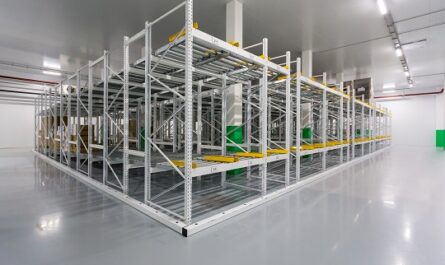In the ever-changing world of managing how things get from A to B, it’s super important for businesses to set goals for how much money they want to make. These goals aren’t just about making cash, they also affect how the business plans and runs its operations.
But figuring out these goals can be tricky. It’s like putting together a puzzle that involves understanding how things move through the supply chain and what the market is like.
To make this easier, here are 10 steps to figure out realistic profit goals from a supply chain perspective.
Before we go further into this topic, don’t forget to follow my LinkedIn account. You’ll get more helpful insights on supply chain management there.
Table of Contents
Define Clear Objectives
To set clear goals for how things move through the supply chain, it’s super important to make sure they match up with what the business as a whole wants to achieve. This means considering things like how well the inventory is managed to keep costs down while still making sure there’s enough stuff for customers. Also, making transportation and logistics smoother can speed up deliveries and make customers happier, giving the business an edge over competitors.
It’s also a good idea to think about being environmentally friendly by reducing things like carbon emissions and making sure products are ethically sourced. This not only fits in with being a responsible business but also makes the brand more attractive to customers who care about the environment.
When it comes to growing the business, the supply chain needs to be able to handle more demand and reach more markets. This might mean using flexible strategies and working closely with suppliers and distributors to keep things flowing smoothly. It’s also important to keep improving and trying out new ideas, like using new technology or automating processes, to stay ahead in the long run.
By setting clear goals that focus on things like market share, growth, and keeping customers happy, the supply chain becomes a big part of what makes the business successful and able to adapt in a changing world.
Assess Market Dynamics
Understanding what’s happening in the market involves looking at lots of different things like what customers want, what competitors are doing, and what’s going on in the industry overall. By studying what customers like to buy and when they buy it, businesses can plan how much stuff to keep in stock and when to make more.
Knowing what competitors are up to, like how much they charge for things or where they sell them, helps businesses figure out how to stand out from the crowd. Keeping up with what’s new in the industry, whether it’s new technology or changing rules, helps businesses stay ahead of the game and come up with new ideas.

By keeping an eye on all these factors, businesses can figure out how much to charge for their products, how to promote them, and where to invest money to keep growing and making money in a changing market.
Evaluate Cost Structure
Looking at how much it costs to run the supply chain is really important because it helps find where money is being wasted and where things can be done more efficiently. This means checking out all the costs involved in getting stuff from suppliers to customers, like buying things, making them, moving them around, and storing them.
By looking closely at each of these areas, businesses can figure out where they’re spending too much money compared to what they’re getting out of it. For example, they might find they’re paying too much to suppliers and can negotiate better deals or combine orders to save money. Or they might see they’re spending too much on making things and can find ways to do it cheaper without sacrificing quality.
Transportation is a big part of the costs too, so it’s important to see if there are ways to ship things that are cheaper or more efficient. This could mean sending bigger shipments, combining different shipments, or using different ways of getting things from place to place.
Another area to look at is how much it costs to keep stuff in storage and move it around. By using tools like forecasting demand or keeping less stuff on hand, businesses can save money on storing and moving things around.
Overall, by digging into all these costs, businesses can find ways to spend less money and make more profit, which helps them compete better in the market.
You might also like:
- 10 Conditions in which 3PL Costs Are More Expensive than Managing Logistics Yourself
- 10 Strategies to Succeed in Supply Chain without Formal Education
Factor in Supply Chain Risks
When making a strong plan for how things move through the supply chain, it’s super important to think about what could go wrong and have a backup plan ready. Things like natural disasters, political problems, or changes in the economy can mess up how things get from suppliers to customers. So, it’s a good idea for businesses to have different suppliers lined up, find other places to get stuff from if needed, and keep talking to suppliers to stay on top of things.

Changes in currency values can also mess with how much things cost, especially if businesses are buying stuff from other countries. Using tricks like hedging or making deals in stable currencies can help keep costs from going all over the place.
Klik dan dapatkan ebook dari scmguide.com ini!
"47 Kesalahan Umum yang Tidak Disadari dalam Manajemen Inventory"
Manfaat yang Anda Peroleh:
🔍 Insight tentang kesalahan yang sering terabaikan
🔧 Tips dan trik praktis untuk perbaikan
📚 Bahasa sederhana yang mudah dipahami
Political stuff, like trade arguments or new rules, can also mess up the supply chain. To deal with this, businesses can think ahead and make plans for different situations, like having extra stuff on hand or finding different ways to move things around.
Using fancy technology to keep an eye on things and spot problems early is also a smart move. By making plans for lots of different problems and keeping an eye out for trouble, businesses can make sure things keep running smoothly even when stuff goes wrong.
Understand Customer Value
To make sure prices match what customers want and make the most money, it’s super important to really understand what customers like, what they need, and how much they’re willing to pay. This means doing lots of research, asking customers questions, and looking at data to figure out what makes them choose to buy something.
Once businesses know what customers value, they can set prices that match up with how much customers think things are worth. For example, if customers think a product is really special or the service is top-notch, they might be okay with paying more.
Looking at different types of customers and how they buy stuff helps too. By offering special deals or grouping products together based on what different types of customers like, businesses can make customers happy while also making more money.
Using fancy math tools to set prices based on things like how much demand there is or what competitors are charging helps businesses stay on top of things. By keeping an eye on what customers like and what’s happening in the market, businesses can keep adjusting prices to stay competitive and make the most money while still giving customers what they want.
Optimize Pricing Strategy
Creating a pricing plan that balances making money with staying competitive means thinking about lots of different things. One way to set prices is called cost-plus pricing, where businesses figure out how much it costs to make something and then add extra money on top to make a profit. But sometimes, this method doesn’t consider what customers think something is worth or what other businesses are charging.

Another way to set prices is based on how much customers think something is worth, called value-based pricing. By setting prices that match up with what customers think, businesses can make more sales and still make money.
There’s also dynamic pricing, which means changing prices based on things like how many people want to buy something or what other businesses are charging. This helps businesses make more money and stay competitive in a fast-changing market.
Offering different levels of service or features for different prices, known as tiered pricing, is another strategy that can help businesses make more money while still making customers happy.
Finally, giving discounts or running special promotions can also help attract customers who are looking for a deal without hurting the business’s long-term profits.
By using a mix of these pricing strategies, businesses can make sure they’re making as much money as possible while still being competitive and giving customers what they want.
You might also like:
- 10 Reasons Why You Should Prioritize COGS Over COGM
- The Domino Effect: Unraveling 10 Consequences of a Weak Supply Chain Team
Utilize Technology and Data Analytics
Using fancy technology and number-crunching tools is super important for understanding how things are going in the supply chain and what customers are up to. By looking at lots of data from all over the supply chain – like how much stuff is made, how much is in stock, how it’s moved around, and what gets sold – businesses can figure out where things are going well and where there’s room to do better. This helps save money by keeping just the right amount of stuff on hand, making sure things get where they need to go efficiently, and making production run smoother.

These tools also help businesses understand what customers like, how they buy things, and what they’re willing to pay for. By looking at data from sales, online clicks, and social media, businesses can figure out how to advertise better, offer products customers really want, and set prices that make sense. This helps keep customers happy, coming back for more, and spending more money.
By using technology and data to keep an eye on the supply chain and what customers are doing, businesses can find new ways to grow and stay ahead of the competition in today’s fast-moving market.
Collaborate with Suppliers and Partners
Working closely with suppliers and partners is really important for making the supply chain run smoothly and saving money. By building strong relationships based on trust and helping each other out, businesses can figure out where things are going wrong and find ways to save money together. This might mean working together to make things more efficient, like using less material or only making stuff when it’s needed.
Sharing information with suppliers helps too, like how much stuff is selling or when more is needed. This helps plan production better and keeps costs down by not having too much stuff sitting around.
Building strong partnerships with important suppliers and partners can also save money and make both sides more profitable. By working together and having the same goals, businesses and partners can find ways to save money and make things better. For example, working together to make new products or getting better deals on supplies.
Overall, by working closely with suppliers and partners, businesses can make the supply chain run better, save money, and make more profit in a way that helps everyone involved.
Implement Performance Metrics
Setting up important measures (called key performance indicators or KPIs) is really important for keeping an eye on how well the supply chain is doing compared to making money goals. By picking out the right things to measure, like how quickly inventory is used up, how often orders get filled on time, and how much it costs to get stuff, businesses can figure out how well the supply chain is working.

For example, inventory turnover shows how often inventory is sold and replaced within a certain time. If this happens a lot, it means inventory is managed well. But if it happens slowly, it could mean there’s too much inventory sitting around, which costs money.
Order fulfillment rates measure how many orders get delivered on time. This shows how good the supply chain is at getting stuff to customers when they want it. By keeping an eye on this, businesses can find and fix problems that slow things down.
Looking at total landed costs helps see how much it costs to get stuff, including buying it, moving it, and storing it. By keeping these costs down, businesses can make more money while still selling stuff at a good price.
Overall, by keeping an eye on measures like inventory turnover, order fulfillment rates, and total landed costs, businesses can make sure the supply chain is doing its best to help meet money goals.
Review and Adjust Regularly
In the ever-changing world of supply chains, it’s super important to keep checking and adjusting profit goals to stay on top of things. By doing this regularly, businesses can stay flexible and change their plans when the market or customers change. This helps them take advantage of new opportunities, avoid problems, and stay competitive.
By keeping an eye on how well things are going inside the business and what’s happening outside, like what customers are saying and what competitors are doing, businesses can find ways to get better and change their profit goals as needed to match what they want to achieve.
Being flexible with profit goals also encourages the business to keep getting better and try out new ideas to make more money. As things change in the market and what customers like, businesses need to be ready to change their plans and use their resources in different ways to keep making money.
Overall, being able to adjust profit goals based on what’s happening in the market and inside the business is really important for staying competitive and making sure the supply chain keeps running smoothly.
Conclusion
To sum up, figuring out how much money to aim for in supply chain management needs a careful plan that looks at things like the market, costs, what customers want, and how well things are going. By following these 10 steps and being ready to change when things shift, businesses can make the most money while keeping things running smoothly in the supply chain.
It’s important to remember that setting profit goals isn’t something you do once and forget about. It’s an ongoing thing that needs to be checked and adjusted regularly to keep up with what the business wants and what’s happening in the market.
I hope you find it helpful!
Please share this article with your colleagues so they can also benefit. For more insights on supply chain management, follow my LinkedIn account. You’re free to use all articles on this blog for any purpose, even for commercial use, without needing to give credit.

 by
by 


